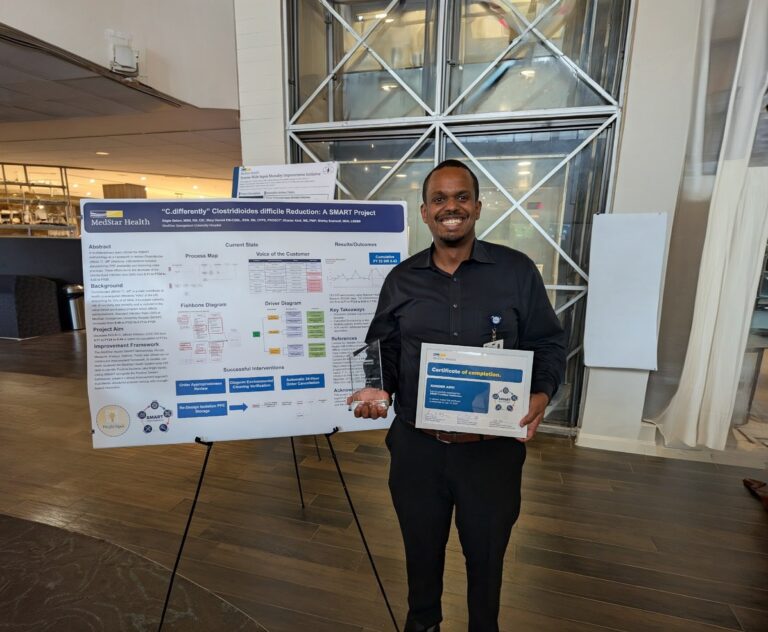Insights to Improvement Summit – Reflection
Yesterday I walked away from the Insights to Improvement Summit with one big realization: data moves decisions, but emotions move people.
The MedStar Insights to Improvement Summit is an annual gathering where associates share projects, give feedback, and spark new ideas. This year featured 30 posters — everything from using machine learning to reduce patient harm, to streamlining validation with Python, to leveraging process improvement methods to improve referral workflows.
Opening Remarks
David Branch, VP of Performance Improvement, kicked off the day by reflecting on the word “insight” and how it connects to improvement — a change toward something better. He challenged us to examine our existing data solutions: do they truly provide insight? If they don’t, then we’re just building for the sake of building — and that doesn’t move us forward.
These opening ideas set the stage for the keynote, which added another critical layer to understanding improvement: influence.
The Power of Influence
The keynote speaker, Dr. Ed Tor, introduced a third layer: influence. He believed that the best way to drive change is to connect with people emotionally. Data tells us where we are now (insight) and what to do next (direction), but emotions are what move people.
One example stuck with me: you can say a billion is a thousand times larger than a million — technically true, but it doesn’t land. Or you can say a million seconds is about 12 days, and a billion seconds is about 32 years. Same numbers, completely different impact.
Ed also shared a story about his daughter saying, “Bruh, that hit different.” He challenged us to use our data in a way that gets the same reaction from our audience. That stuck with me all day.
At times, professionals end up delivering jargon. Jargon has its place, the speaker reminded us. But we should always adjust our delivery to the audience — “translate the jargon, translate the numbers.”
That advice really made me pause and think about my own work. For years, I’ve built dashboards to help stakeholders make data-driven decisions. I’d show benchmarks, year-over-year changes, ratios. That approach works for some audiences. But maybe the real impact comes when we frame results in terms of people — lives touched and harm reduced. That hits differently for front-line associates who live the work every day.
Recognition and Gratitude
After the sessions, associates explored the posters, asked questions, and voted for the one they found most impactful. The People’s Choice Award went to a project on reducing C. diff at Georgetown Hospital — a project I was proud to co-lead. It was both honoring and humbling to be recognized by peers for work that matters to our patients and to us.
I left the summit thinking: how can I deliver data products that “hit different”?
